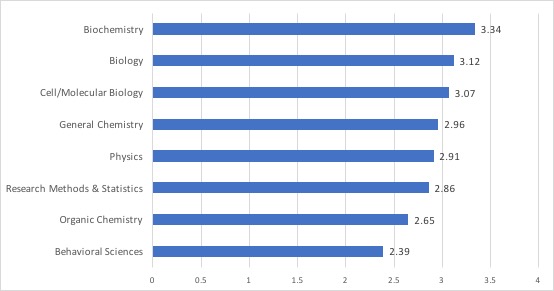|
Frank H. Netter M.D. School Of Medicine At Quinnipiac University
The Frank H. Netter M.D. School of Medicine at Quinnipiac University, also known colloquially as Quinnipiac Medical School, or simply "Netter," is a medical school located in North Haven, Connecticut. Established in 2010 (and welcoming its first class in 2013). Establishment The Frank H. Netter M.D. School of Medicine was established in 2010 with a $100 million investment from the family of Frank H. Netter, the renowned surgeon and medical illustrator. It received preliminary accreditation from the Association of American Medical Colleges (AAMC), preliminary accreditation from the Liaison Committee on Medical Education (LCME), and full accreditation from the Connecticut State Board of Education in 2012. It welcomed its first class in 2013. The school of medicine received full accreditation from the LCME in February 2017. Netter is one of about a dozen new medical schools established in anticipation of increased demand for medical professionals following the passage of the Pati ... [...More Info...] [...Related Items...] OR: [Wikipedia] [Google] [Baidu] |
Quinnipiac University
Quinnipiac University () is a private university in Hamden, Connecticut. The university grants undergraduate, graduate, and professional degrees through its College of Arts and Sciences, School of Business, School of Engineering, School of Communication, School of Health Sciences, School of Law, School of Medicine, School of Nursing, and School of Education. The university also hosts the Quinnipiac University Polling Institute. History What became Quinnipiac University was founded in 1929 by Samuel W. Tator, a business professor and politician. Phillip Troup, a Yale College graduate, was another founder, and became its first president until his death in 1939. Tator's wife, Irmagarde Tator, a Mount Holyoke College graduate, also played a major role in the fledgling institution's nurturing as its first bursar. Additional founders were E. Wight Bakke, who later became a professor of economics at Yale, and Robert R. Chamberlain, who headed a furniture company in his name. ... [...More Info...] [...Related Items...] OR: [Wikipedia] [Google] [Baidu] |
The New York Times
''The New York Times'' (''the Times'', ''NYT'', or the Gray Lady) is a daily newspaper based in New York City with a worldwide readership reported in 2020 to comprise a declining 840,000 paid print subscribers, and a growing 6 million paid digital subscribers. It also is a producer of popular podcasts such as '' The Daily''. Founded in 1851 by Henry Jarvis Raymond and George Jones, it was initially published by Raymond, Jones & Company. The ''Times'' has won 132 Pulitzer Prizes, the most of any newspaper, and has long been regarded as a national " newspaper of record". For print it is ranked 18th in the world by circulation and 3rd in the U.S. The paper is owned by the New York Times Company, which is publicly traded. It has been governed by the Sulzberger family since 1896, through a dual-class share structure after its shares became publicly traded. A. G. Sulzberger, the paper's publisher and the company's chairman, is the fifth generation of the family to head the pa ... [...More Info...] [...Related Items...] OR: [Wikipedia] [Google] [Baidu] |
Hamden, Connecticut
Hamden is a town in New Haven County, Connecticut, United States. The town's nickname is "The Land of the Sleeping Giant". The population was 61,169 at the 2020 census. History The peaceful tribe of Quinnipiacs were the first residents of the land that is now Hamden, they had great regard awe and veneration for the Blue Hills Sleeping Giant Mountain. amden was purchased by William Christopher Reilly and the Reverend John Davenport in 1638 from the local Quinnipiac Native American tribe. It was settled by Puritans as part of the town of New Haven. It remained a part of New Haven until 1786 when 1,400 local residents incorporated the area as a separate town, naming it after the English statesman John Hampden. Largely developed as a nodal collection of village-like settlements (which remain distinct today), including Mount Carmel (home to Quinnipiac University), Whitneyville, Spring Glen, West Woods, and Highwood, Hamden has a long-standing industrial history. In 1798, four ... [...More Info...] [...Related Items...] OR: [Wikipedia] [Google] [Baidu] |
Connecticut Children's Medical Center
Connecticut Children's Medical Center is a nationally ranked, independent, non-profit, pediatric acute care hospital located in Hartford, Connecticut. The hospital has 185 beds and is the primary pediatric teaching affiliate of the University of Connecticut School of Medicine and the Frank H. Netter MD School of Medicine at Quinnipiac University. The hospital provides comprehensive pediatric specialties and subspecialties to pediatric patients aged 0–21 throughout Connecticut and the New England region, but also treats some adults that would be better treated under pediatricians. Connecticut Children's Medical Center also features the only ACS verified level 1 pediatric trauma center in the region, and 1 of 2 in the state. The hospital is also 1 of 2 children's hospital in the state of Connecticut. History Connecticut Children's Medical Center was founded as the Newington Home for Incurables in Newington, CT in 1898 by the Connecticut Children's Aid Society. It eventually was e ... [...More Info...] [...Related Items...] OR: [Wikipedia] [Google] [Baidu] |
Saint Francis Hospital & Medical Center
Saint Francis Hospital & Medical Center is a 617-bed acute care hospital located on Woodland Street in Hartford, Connecticut. The hospital was established in 1897 by the Sisters of Saint Joseph of Chambéry. With 617 beds and 65 bassinets, it is the largest Catholic hospital in New England. History Saint Francis has been affiliated with Mount Sinai Hospital since 1990. This was the first recorded instance of collaboration between a Catholic hospital and a Jewish hospital in the United States. The two institutions formalized the corporate merger in 1995. In addition, the hospital maintains affiliations with Saint Mary's Hospital, Waterbury, which is independently licensed. Saint Francis, a regional referral center, has major clinical concentrations in cardiology, oncology, orthopedics, women's services and rehabilitation. In 2008, ground was broken on a ten story addition, the John T. O'Connell Tower. Opened in March 2011, this addition included 19 replacement operating rooms, 72 ... [...More Info...] [...Related Items...] OR: [Wikipedia] [Google] [Baidu] |
Medical College Admission Test
The Medical College Admission Test (MCAT; ) is a computer-based standardized examination for prospective medical students (both Allopathic M.D. and Ostepathic D.O.) in the United States, Australia, Canada, and Caribbean Islands. It is designed to assess problem solving, critical thinking, written analysis and knowledge of scientific concepts and principles. Before 2007, the exam was a paper-and-pencil test; since 2007, all administrations of the exam have been computer-based. The most recent version of the exam was introduced in April 2015 and takes 7.5 hours to complete. The test is scored in a range from 472 to 528. The MCAT is administered by the Association of American Medical Colleges (AAMC). History Moss Test: 1928–46 In the 1920s, dropout rates in US medical schools soared from 5% to 50%, leading to the development of a test that would measure readiness for medical school. Physician F. A. Moss and his colleagues developed the "Scholastic Aptitude Test for Medical Stu ... [...More Info...] [...Related Items...] OR: [Wikipedia] [Google] [Baidu] |
USMLE Step 2 Clinical Knowledge
The USMLE-Step 2-CK ("Clinical Knowledge") is the nine-hour-long multiple-choice portion of the second part of the United States Medical Licensure Examination. It assesses clinical knowledge through a traditional, multiple-choice examination. In contrast to the USMLE Step 1, the focus is much more on clinical application of medical knowledge. It assesses the ability to apply medical knowledge, skills, and understanding of clinical science essential for the provision of patient care under supervision. The USMLE Step 2 is generally taken during the 4th year of medical school by U.S. medical students. Format The exam is administered in a 9-hour single-day computer-based session. The session is divided into eight one-hour blocks of questions, a 15 minute tutorial and a 45 minute break. The 15-minute tutorial at the beginning of the exam is optional. The 45 minutes allowed for breaks can only be taken between sections at the discretion of the test taker. Both the unused tutorial time ... [...More Info...] [...Related Items...] OR: [Wikipedia] [Google] [Baidu] |
USMLE Step 1
The USMLE Step 1 (more commonly just Step 1 or colloquially, The Boards) is the first part of the United States Medical Licensing Examination. It aims to assess whether medical school students or graduates can apply important concepts of the foundational sciences fundamental to the practice of medicine. US medical students who wish to seek licensure to practice medicine in the US typically take Step 1 at the end of the second year of medical school. Graduates of international medical schools (i.e., those outside the US or Canada) must also take Step 1 if they want to practice in the US. Graduates from international medical schools must apply through ECFMG, and the registration fee is $915. For 2020, the NBME registration fee for the test is $645, with additional charges for applicants who choose a testing region outside the United States or Canada. Prior to January 2022, Step 1 scoring is a three-digit score, theoretically ranging from 1 to 300, with a passing score of 194. It was ... [...More Info...] [...Related Items...] OR: [Wikipedia] [Google] [Baidu] |
Baby Boomer
Baby boomers, often shortened to boomers, are the Western demographic cohort following the Silent Generation and preceding Generation X. The generation is often defined as people born from 1946 to 1964, during the mid-20th century baby boom. The dates, the demographic context, and the cultural identifiers may vary by country. The baby boom has been described variously as a "shockwave" and as "the pig in the python". Most baby boomers are children of either the Greatest Generation or the Silent Generation, and are often parents of late Gen Xers and Millennials. Late baby boomers can also be the parents of older members of Generation Z. In the West, boomers' childhoods in the 1950s and 1960s had significant reforms in education, both as part of the ideological confrontation that was the Cold War, and as a continuation of the interwar period. In the 1960s and 1970s, as this relatively large number of young people entered their teens and young adulthood—the oldest turned 18 ... [...More Info...] [...Related Items...] OR: [Wikipedia] [Google] [Baidu] |
Private University
Private universities and private colleges are institutions of higher education, not operated, owned, or institutionally funded by governments. They may (and often do) receive from governments tax breaks, public student loans, and grant (money), grants. Depending on their location, private universities may be subject to government regulation. Private universities may be contrasted with public university, public universities and national university, national universities. Many private universities are nonprofit organizations. Africa Egypt Egypt currently has 20 public universities (with about two million students) and 23 private universities (60,000 students). Egypt has many private universities, including The American University in Cairo, the German University in Cairo, the British University in Egypt, the Arab Academy for Science, Technology and Maritime Transport, Misr University for Science and Technology, Misr International University, Future University in Egypt and ... [...More Info...] [...Related Items...] OR: [Wikipedia] [Google] [Baidu] |
Patient Protection And Affordable Care Act
The Affordable Care Act (ACA), formally known as the Patient Protection and Affordable Care Act and colloquially known as Obamacare, is a landmark U.S. federal statute enacted by the 111th United States Congress and signed into law by President Barack Obama on March 23, 2010. Together with the Health Care and Education Reconciliation Act of 2010 amendment, it represents the U.S. healthcare system's most significant regulatory overhaul and expansion of coverage since the enactment of Medicare and Medicaid in 1965. The ACA's major provisions came into force in 2014. By 2016, the uninsured share of the population had roughly halved, with estimates ranging from 20 to 24 million additional people covered. The law also enacted a host of delivery system reforms intended to constrain healthcare costs and improve quality. After it went into effect, increases in overall healthcare spending slowed, including premiums for employer-based insurance plans. The increased coverage was due ... [...More Info...] [...Related Items...] OR: [Wikipedia] [Google] [Baidu] |
Connecticut State Board Of Education
The Connecticut State Board of Education is the governing body of the Connecticut State Department of Education, which oversees the public education in the U.S. state, state, distribute funds to the state's 166 school districts, and operates the Connecticut Technical High School System. The State Board of Education consists of fifteen members, at least two of whom have experience in manufacturing or a trade offered at the Technical High School System, one with a background in vocational agriculture and two nonvoting Grade 12 student members. The Governor appoints, with the advice and consent of the General Assembly, the members to the Board. The thirteen voting members are appointed to four-year terms, and the student members are appointed to one-year terms. The Commissioner of the Department of Higher Education serves as an ex officio, nonvoting member. The State Board of Education recommends to the Governor the appointment of the Commissioner of Education, who serves as the secret ... [...More Info...] [...Related Items...] OR: [Wikipedia] [Google] [Baidu] |

.png)




